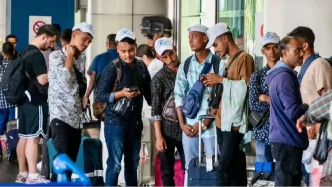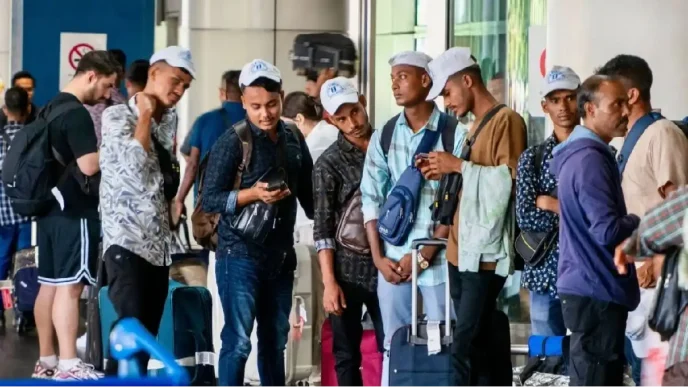In a significant step toward bolstering regional security, Japan and the Philippines are on the cusp of finalizing a bilateral General Security of Military Information Agreement (GSOMIA), a pact that will enable the sharing of highly confidential military intelligence. This development, confirmed by sources within the Japanese government, is set to be formalized during a summit later this month, marking a deepening of defense ties between the two nations at a time of heightened geopolitical tensions in the Asia-Pacific region.
Strategic Summit in Manila
Japanese Prime Minister Shigeru Ishiba is scheduled to visit the Philippines from April 27 to 30 as part of a broader regional tour that also includes Vietnam. During his stay in Manila, Ishiba will meet with Philippine President Ferdinand Marcos Jr to discuss a range of security initiatives. Central to their talks will be the GSOMIA, which is seen as a cornerstone for enhanced military cooperation. The agreement will facilitate the secure exchange of sensitive information, a critical component for coordinated responses to regional challenges.
Beyond the GSOMIA, the leaders are expected to initiate negotiations for a mutual logistics support agreement. This pact would allow the Japanese Self-Defense Forces (SDF) and the Philippine military to provide each other with essential supplies such as food and fuel, streamlining joint operations and disaster response efforts. Additionally, discussions on joint coast guard drills are anticipated, reflecting a shared commitment to maritime security in contested waters.
The summit will also focus on Japan’s Official Security Assistance (OSA) programs, through which Tokyo provides defense equipment at no cost to countries aligned with its strategic values. This initiative, already active in the Philippines, is expected to expand, further equipping Manila to address security concerns in the region.
Regional Context and China’s Shadow
The timing of this agreement is no coincidence. Japan and the Philippines are increasingly aligning their security policies in response to China’s assertive actions in the South China Sea and beyond. Both nations have expressed concerns over Beijing’s expanding military presence and hegemonic ambitions, which have included territorial disputes with the Philippines over the Spratly Islands and tensions with Japan over the Senkaku Islands in the East China Sea.
By strengthening military ties, Tokyo and Manila aim to create a united front that can better navigate these challenges. The GSOMIA, in particular, will enable the two countries to share real-time intelligence on regional developments, enhancing their ability to respond swiftly to potential threats. While neither leader has explicitly named China as the primary motivator for this agreement, sources close to the Japanese government indicate that countering Beijing’s influence is a key underlying factor.
Analysts suggest that this partnership could serve as a model for other nations in the region seeking to balance China’s growing power. “This agreement is a clear signal that Japan and the Philippines are not standing alone” said Dr. Maria Lopez, a security expert based in Manila. “It’s about building a network of alliances that prioritize stability and the rule of law in the region.”
Broader Regional Engagement in Vietnam
Prior to his visit to Manila, Prime Minister Ishiba will stop in Hanoi to meet with Vietnamese Prime Minister Pham Minh Chinh. This leg of the tour underscores Japan’s broader strategy to fortify security cooperation across Southeast Asia. During their discussions, the leaders are expected to agree on establishing a “two-plus-two” dialogue framework, involving vice foreign and defense ministers from both countries. The inaugural meeting of this format is slated to take place in Japan by the end of the year, marking a significant step toward institutionalized security collaboration.
Additionally, Ishiba and Pham are likely to commit to leveraging Japan’s OSA programs in Vietnam for the first time. If implemented, this would provide Hanoi with access to Japanese defense equipment, enhancing its military capabilities. The leaders will also explore cooperation in the semiconductor industry, a move aimed at fostering economic ties alongside security partnerships.
Another key topic on the agenda is the response to potential trade challenges posed by the administration of U.S. President Donald Trump, particularly regarding tariffs. Both Japan and Vietnam, as export-driven economies, are keen to coordinate their strategies to mitigate any adverse economic impacts. This dialogue reflects the multifaceted nature of Ishiba’s regional outreach, blending security and economic priorities.
Implications for Regional Security Architecture
The agreements and discussions during Ishiba’s tour are poised to reshape the security architecture of Southeast Asia. The GSOMIA with the Philippines, in particular, represents a deepening of trust and interoperability between two key U.S. allies in the region. This pact could pave the way for more trilateral or quadrilateral initiatives involving other partners, such as the United States and Australia, under frameworks like the Quad (Quadrilateral Security Dialogue).
Moreover, the focus on coast guard drills and mutual logistics support highlights the importance of maritime security in the region. The South China Sea remains a flashpoint, with overlapping territorial claims and frequent encounters between Chinese vessels and those of claimant states like the Philippines. Joint exercises and enhanced coordination between Japan and the Philippines could serve as a deterrent to aggressive actions, while also improving capabilities for humanitarian assistance and disaster relief—crucial in a region prone to natural calamities.
However, the expansion of Japan’s security role in Southeast Asia is not without challenges. Tokyo must navigate domestic constraints, including constitutional limits on its military engagement abroad, as well as regional sensitivities about Japan’s historical role during World War II. While countries like the Philippines and Vietnam have welcomed Japanese assistance, others in the region may view Tokyo’s growing influence with caution.
Public and Political Reactions
In the Philippines, the upcoming summit has garnered significant attention, with opinions divided on the implications of closer ties with Japan. Supporters argue that the agreements will bolster national security and provide much-needed resources for the military. “We need partners like Japan to stand with us against external pressures” said a senior official from the Department of National Defense in Manila. Critics, however, caution against over-reliance on foreign assistance, emphasizing the need for the Philippines to develop its own defense capabilities.
In Japan, Prime Minister Ishiba’s proactive approach to regional security has been largely well-received, though some domestic commentators question the financial and political costs of expanding OSA programs. Public sentiment, as reflected in recent online discussions, appears to support stronger ties with Southeast Asian nations, particularly as a counterbalance to China’s regional dominance.
Looking Ahead
As Prime Minister Ishiba embarks on this pivotal regional tour, the outcomes of his discussions in Manila and Hanoi will likely set the tone for Japan’s engagement with Southeast Asia in the coming years. The GSOMIA with the Philippines, if finalized, will mark a historic milestone in bilateral relations, while the agreements with Vietnam signal Tokyo’s intent to play a larger role in shaping regional stability.
Yet, questions remain about how these partnerships will evolve in the face of shifting geopolitical dynamics. Will they deter potential aggressors, or could they escalate tensions in an already volatile region? As these agreements take shape, the eyes of the international community will be on Japan and its Southeast Asian partners, watching closely for the next chapter in this unfolding strategic alignment.














